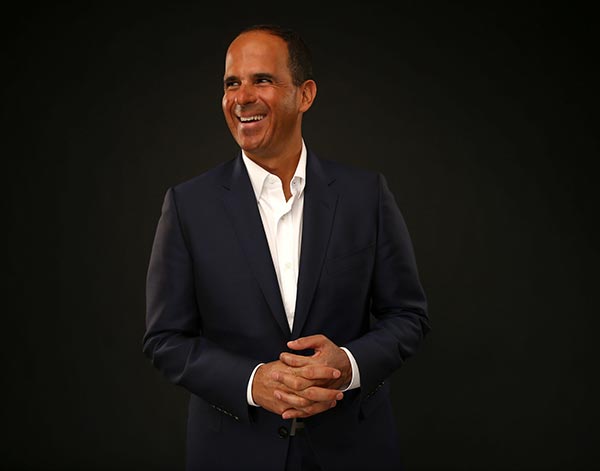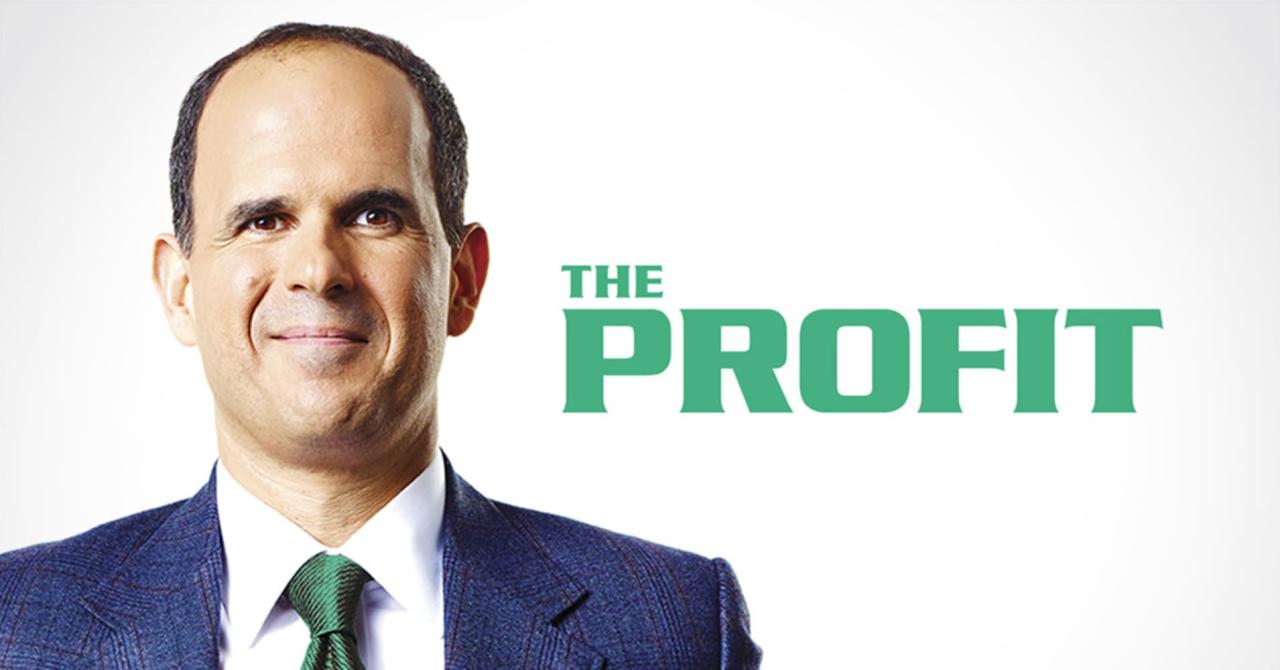
The Inventory Trap: Why "Rich Cash Poor" Haunts Businesses, According to Marcus Lemonis
In the intricate world of business, where the pursuit of profit is paramount, a peculiar paradox often traps even seemingly successful enterprises: being "rich cash poor." This is a scenario where a company boasts substantial assets, particularly in the form of inventory, yet struggles with a critical lack of liquid capital. It’s a predicament that Marcus Lemonis, the renowned investor, entrepreneur, and host of CNBC’s "The Profit," has encountered countless times. Through his interventions, Lemonis consistently highlights that an abundance of inventory, while appearing as an asset on paper, can quickly become a crippling liability, suffocating a business’s ability to operate, innovate, and ultimately survive.
The phrase "rich cash poor" succinctly captures a dangerous imbalance. On the balance sheet, inventory is indeed listed as a current asset. However, unlike cash, accounts receivable, or even short-term investments, inventory represents potential value, not actual liquidity. It’s capital tied up in goods that haven’t been sold, materials that haven’t been manufactured into products, or finished items gathering dust in a warehouse. For Marcus Lemonis, whose business philosophy revolves around the "Three Ps" – People, Product, and Process – the product’s effective management, particularly inventory, is intrinsically linked to the health of a business’s cash flow, which he frequently declares is "king."
The Illusion of Wealth: How Businesses Fall into the Inventory Trap
The journey into being rich cash poor often begins subtly, fueled by a cocktail of common business missteps and misconceptions:
-
Over-Optimistic Forecasting: Businesses, driven by ambition or a fear of missing out, often project sales figures that are overly optimistic. This leads to purchasing raw materials or finished goods in quantities far exceeding actual demand. When sales don’t materialize as expected, the excess stock accumulates.
-
Chasing Discounts and Bulk Buys: The allure of volume discounts can be powerful. While buying in bulk might reduce the per-unit cost, if those units don’t sell quickly, the savings are quickly dwarfed by the carrying costs. Lemonis frequently admonishes business owners for buying "just because it’s on sale" without understanding the true demand.
-
Ineffective Sales and Marketing: A brilliant product is useless if it doesn’t move off the shelves. Poor marketing, a weak sales team, or an inability to connect with the target audience can result in products stagnating, turning valuable inventory into dead stock.
-
Poor Product Assortment and Obsolescence: Businesses might stock too many variations of a product, or products that quickly become outdated due to technological advancements or changing fashion trends. This is particularly prevalent in retail and tech sectors. Lemonis often identifies businesses with a bloated product line, only a small fraction of which is profitable.
-
Lack of Understanding of Carrying Costs: Beyond the initial purchase price, inventory incurs significant carrying costs. These include:
- Storage Costs: Rent for warehouse space, utilities, shelving.
- Insurance: Protecting against theft, damage, or loss.
- Obsolescence and Spoilage: The risk of items losing value, expiring, or becoming unsellable.
- Shrinkage: Theft, damage, or administrative errors.
- Opportunity Cost: The capital tied up in inventory could have been invested elsewhere, such as in marketing, R&D, or expanding operations. This is a critical point for Lemonis; every dollar sitting in unsold inventory is a dollar not working for the business.
-
Inefficient Processes: From ordering to receiving, stocking, and selling, inefficient processes can exacerbate inventory issues. A lack of proper inventory management systems means businesses don’t know what they have, where it is, or how fast it’s selling, leading to poor purchasing decisions.
Marcus Lemonis’s Lens: Cash Flow, Product, Process, People
Lemonis’s approach to fixing rich cash poor businesses is holistic, but always returns to the core principle of cash flow.
1. Cash is King: This is his unwavering mantra. He consistently reminds entrepreneurs that a healthy profit-and-loss statement means little if the cash flow statement is bleeding. Inventory, in his view, is a direct drain on cash if not managed meticulously. Businesses need cash to pay employees, suppliers, rent, and to invest in future growth. Without it, even profitable businesses can fail.
2. Product Scrutiny: Lemonis dives deep into the "Product" aspect. He asks:
- Is the product right for the market? Is it selling at a good margin?
- Is there too much of the wrong product? He often finds businesses with vast amounts of inventory for items that are no longer in demand or are poor sellers.
- What’s the product’s lifecycle? Is it seasonal? Does it quickly become obsolete? Understanding this helps dictate purchasing strategies.
- Can the product be improved or diversified? Sometimes, the solution isn’t just to sell existing stock, but to rethink the product itself.
3. Process Optimization: This is where inventory management truly shines. Lemonis meticulously examines the "Process" of how inventory is handled:
- Purchasing: Are orders based on data or gut feeling? Are supplier relationships optimized for terms, not just price?
- Storage: Is the warehouse organized? Are carrying costs understood and minimized?
- Sales Cycle: How long does it take for a product to go from raw material to sold item? Faster cycles mean better cash flow.
- Inventory Tracking: Does the business use a robust system to track stock levels, reorder points, and sales data? Without this, informed decisions are impossible. He often champions technology solutions to bring clarity to chaotic inventory.
4. People Accountability: Finally, the "People" behind the decisions are crucial.
- Who is making purchasing decisions? Do they understand the financial implications of tying up capital in inventory?
- Is the sales team motivated and effective? Are they equipped to move existing stock?
- Is there clear communication between sales, purchasing, and finance departments regarding inventory levels and demand? Lemonis often finds disconnects where purchasing continues to buy without full awareness of sales performance.
The Dire Consequences
Being rich cash poor, particularly due to excessive inventory, can lead to a cascade of negative outcomes:
- Inability to Pay Bills: The most immediate and dangerous consequence. Suppliers go unpaid, employees may face delayed wages, and rent falls behind, leading to strained relationships, lawsuits, and ultimately, business closure.
- Missed Opportunities: Without cash, a business cannot seize growth opportunities like investing in new equipment, expanding into new markets, or launching innovative products.
- Forced Liquidation: To generate cash, businesses are often forced to sell off inventory at heavily discounted prices, eroding profit margins and sometimes selling below cost, further worsening their financial health. Lemonis often orchestrates these "fire sales" as a necessary, albeit painful, first step to inject liquidity.
- Increased Debt: Businesses may take on high-interest loans to cover operational expenses, digging themselves into a deeper financial hole.
- Operational Stagnation: A lack of working capital can halt production, prevent necessary repairs, and stifle any form of innovation.
- Stress and Burnout: The constant financial pressure takes a massive toll on owners and employees, leading to demotivation and high turnover.
Strategies for Rectification: Lessons from The Profit
Marcus Lemonis’s interventions provide a clear roadmap for businesses caught in the inventory trap:
-
Immediate Inventory Assessment and Liquidation: The first step is always to get a clear picture of what’s truly on hand. Identify dead stock (items that haven’t sold in a long time), slow-moving stock, and damaged goods. Lemonis advocates for aggressive liquidation, even at a loss, to convert static inventory into much-needed cash. "A bad deal is better than no deal," he often says when it comes to old inventory.
-
Implement Robust Inventory Management Systems: Move away from manual tracking. Invest in software that provides real-time data on stock levels, sales velocity, reorder points, and supplier lead times. This allows for data-driven decision-making.
-
Improve Forecasting and Purchasing Practices:
- Data-Driven Decisions: Base purchasing on historical sales data, current market trends, and reliable demand forecasts, not just intuition.
- Just-In-Time (JIT) Principles: Where feasible, adopt JIT inventory management to minimize stock holding and carrying costs, receiving goods only as they are needed for production or sale.
- Supplier Relationship Management: Negotiate better payment terms (e.g., longer payment windows) or explore consignment agreements where you only pay for goods once they sell.
-
Optimize Product Assortment: Focus on high-margin, fast-moving products. Eliminate or reduce stock of underperforming items. Streamline product lines to reduce complexity and inventory holding.
-
Enhance Sales and Marketing Efforts: Develop strategies to actively move existing inventory. This could include targeted promotions, bundling deals, loyalty programs, or improving the sales team’s effectiveness.
-
Understand and Reduce Carrying Costs: Regularly audit storage and handling costs. Look for ways to optimize warehouse space, reduce waste, and improve security.
-
Prioritize Cash Flow Statements: Business owners must learn to read and understand their cash flow statement as intently as their profit and loss. It’s the true indicator of financial health. Lemonis teaches that profit is an opinion, but cash is a fact.
Conclusion
The "rich cash poor" phenomenon serves as a powerful cautionary tale in business. While a healthy inventory level is essential for meeting customer demand, an excessive or mismanaged one can be a silent killer, draining liquidity and crippling operational flexibility. Marcus Lemonis’s consistent emphasis on the "Three Ps" – particularly the meticulous management of "Product" through optimized "Process" by accountable "People" – provides a critical framework for avoiding and escaping this trap.
Ultimately, a business’s true wealth isn’t measured solely by the assets it possesses on paper, but by its ability to generate and manage cash. In Lemonis’s world, cash flow isn’t just a metric; it’s the lifeblood of any thriving enterprise. Businesses that learn to manage their inventory not just as assets, but as dynamic components of their cash flow, are the ones that will not only survive but also flourish. The lesson is clear: in the pursuit of profit, never let your inventory become a gilded cage.

